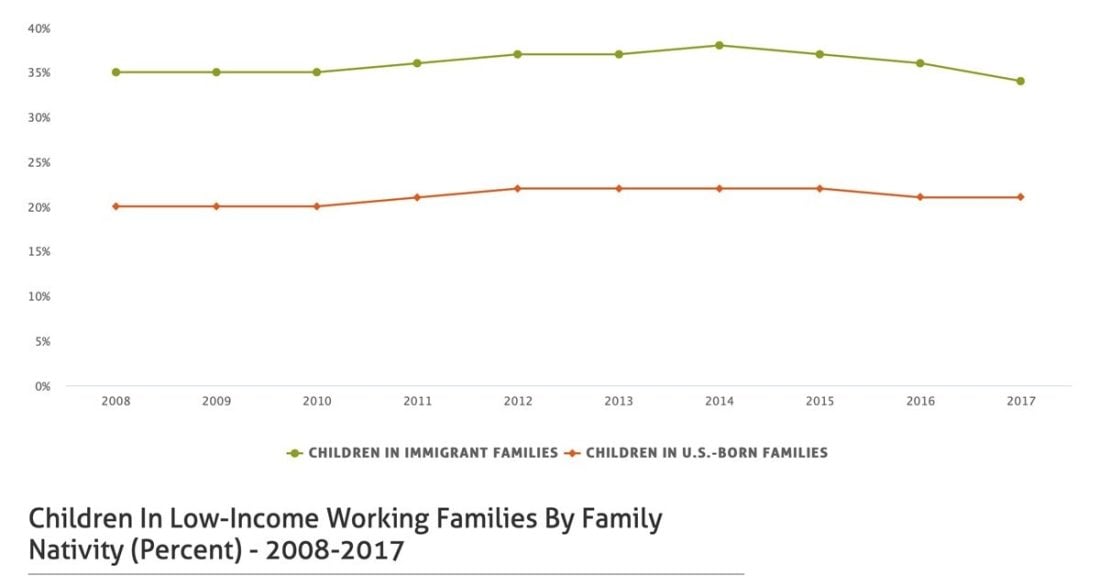Immigrant Families and Kids See Economic Gains in 2017 — But Disparities Persist

The strengthened U.S. economy seems to be buoying children in immigrant families, despite these families having less access to resources relative to their native-born counterparts.
The share of children in immigrant families living below 200% of the poverty threshold — set at $49,716 in annual earnings for a family of four — has dropped below the 50% mark for the first time since the start of the Great Recession. After peaking at 55% in 2011, this statistic now sits at 48%.
Among immigrant parents who are working, a slightly higher proportion have earned enough to lift their families above the 200% poverty threshold. The percentage of kids living in low-income immigrant families, despite at least one parent working full time, dropped from 36% in 2016 to 34% in 2017.
Despite this improvement, immigrant families are still more likely to struggle to make ends meet compared to their native-born counterparts. Nationwide, this statistic has ranged from 20% to 22% since 2008, landing at 21% in 2017.
Additionally: Every state in the southern United States with a sizeable population of immigrant families reported at least half of these families living below the 200% poverty threshold. The two exceptions in this category were Maryland and Virginia.
California — the state with the highest percentage of children in immigrant families — reports that 47% of its immigrant families are living below the 200% poverty threshold.






